

 Culture & Adventure
Culture & Adventure


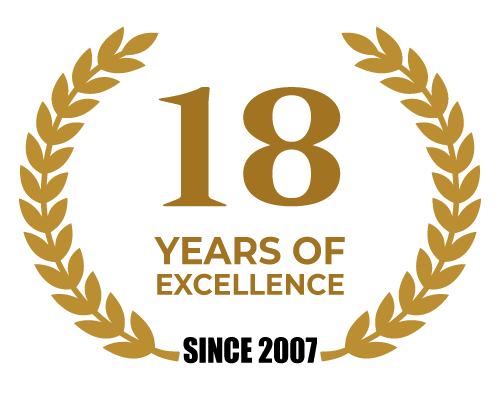
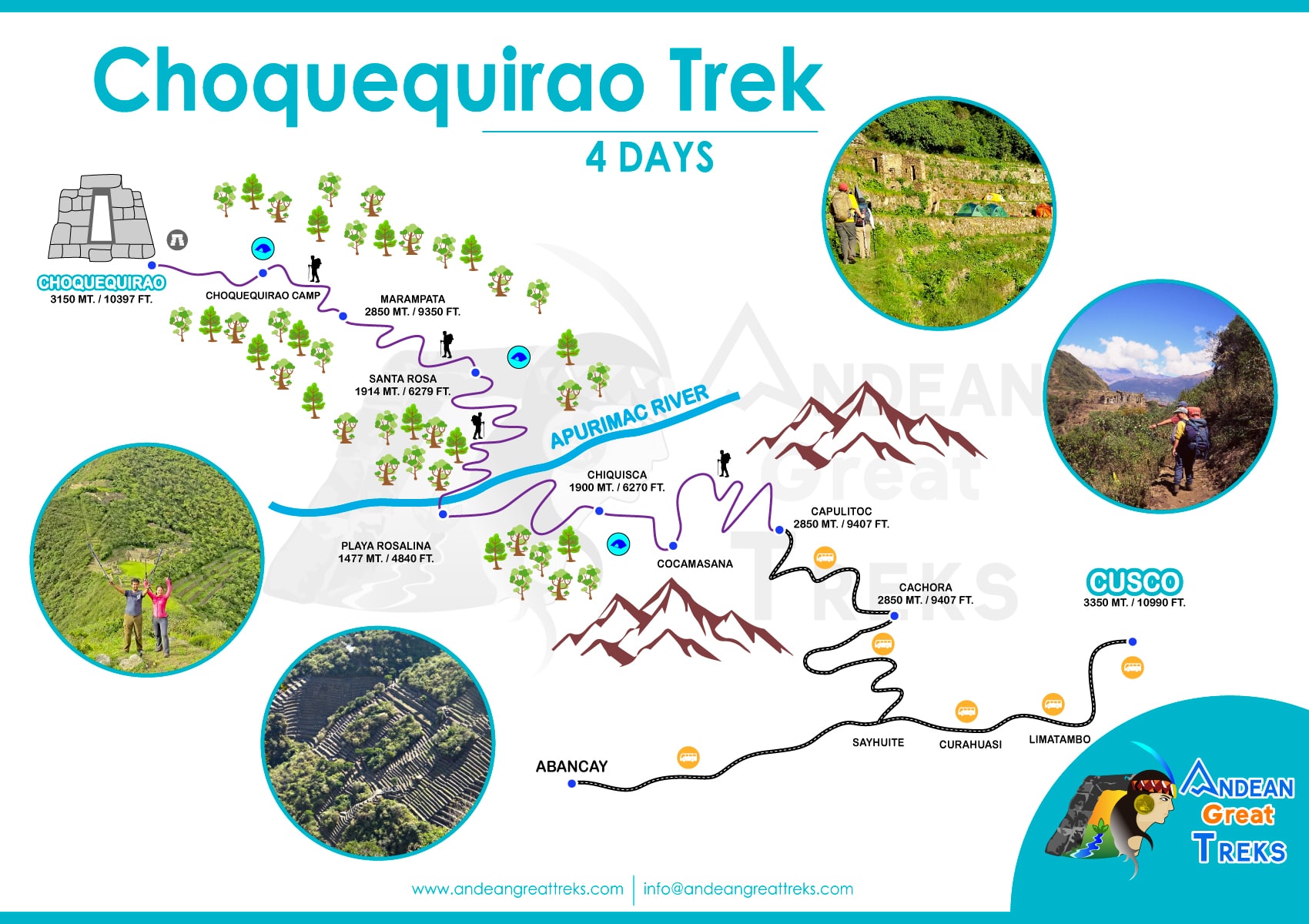 trip overview
included
Trip Highlights
activities
accommodations
itinerary
packing list
faq
essential trip information
best season to travel
price & availability
Reserve Online
trip overview
included
Trip Highlights
activities
accommodations
itinerary
packing list
faq
essential trip information
best season to travel
price & availability
Reserve Online
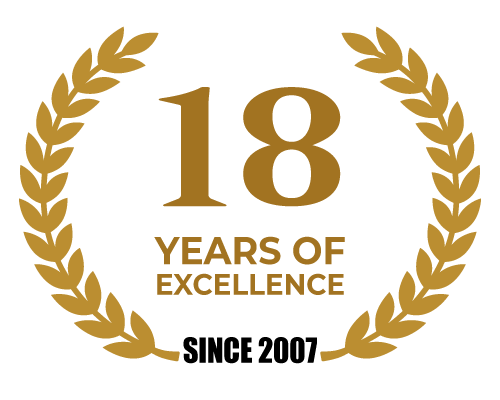 CREATING AUTHENTIC TOURS IN PERU
CREATING AUTHENTIC TOURS IN PERU

The Vilcabamba Trek is one of the most challenging and remote trekking routes in the Peruvian Andes, connecting two of the most impressive archaeological sites: Choquequirao (known as the “sacred sister” of Machu Picchu) and Vitkos, one of the last remaining places where the Incas lived. The tour culminates at Machu Picchu. This route, which traverses the Vilcabamba mountain range, offers a unique combination of history, nature, and adventure, passing through diverse landscapes such as deep canyons, cloud forests, and snow-capped peaks. Unlike more touristy routes, this one is ideal for experienced travelers seeking solitude and an authentic connection with Inca culture and Andean biodiversity.
During the eight-day Vilcabamba Trek, visitors will walk an original Inca trail that maintains many sections of its originality, as built by the Inca architects. The Vilcabamba Trek is considered extremely demanding, with distances of 15 to 20 km per day, steep elevation changes (such as the 1,500-meter descent to the Apurímac and subsequent climbs), and unpredictable weather, ranging from the hot, dry valleys to the intense cold of the Minas Victoria and Choquetakarpo passes at over 4,000 meters. The best season is from April to October, as there is usually little rainfall. Although the hike is arduous, the Vilcabamba Trek is a transformative experience, reserved for those who wish to follow in the footsteps of the last Incas in almost untouched landscapes.
Andean Great Treks organizes the Vilcabamba trek only on a private basis. We require a minimum of two participants and a maximum of eight. Our groups are led by an expert tour guide specializing in the Vilcabamba, Choquequirao, and Machu Picchu routes. You will also be assisted by our expert cooks in preparing lunches, breakfasts, and dinners, with the best balance of protein, carbohydrates, and, of course, water for your daily routine. The team also includes muleteers who are responsible for carrying all camping equipment, food, and backpacks. Hikers only carry their small backpacks and trekking poles. For the Vilcabamba Trek, you should prepare several months in advance, taking short hikes in your country. We recommend arriving in Cusco at least three days in advance to allow time for acclimatization to the altitude.
Vilcabamba Trek is one of the most challenging hikes to Machu Picchu. There are several tough ascents and descents that require a good level of fitness. The route is approximately 95 km / 59 miles long. The trekking days are long and tiresome and there are some serious mountain passes to conquer. To successfully complete the Vilcabamba trek, you need to be in extremely good physical shape. The Vilcabamba trek is best done during the dry season (May-September), micro-climates predominate in the Andes, so plan for hot afternoons and cool to cold nights. There is a possibility of encountering some rain all year round, so bring along some waterproof clothing too.
To begin the Vilcabamba Trek, it is highly recommended to acclimatize well to the altitude to avoid altitude sickness. The Vilcabamba trek is a real challenge. You will need to be physically fit and mentally strong to enjoy this trek fully. If you are not already doing weekly fitness activities, you should get started! The sooner you start training, the better. At a minimum, you should start a fitness regime 3 months before taking on this trail.
The best exercises for building hiking fitness are cardiovascular activities. Start with walking and build up to jogging. Swimming and cycling are also good activities for building hiking muscles. Cardiovascular fitness will improve your body’s oxygen utilization. This is important for hiking in high altitudes and preventing or limiting potential altitude sickness. You also need to spend time hiking in mountainous terrain with a weighted backpack. Some light weights and strength training are good additions to a workout routine.
6-Night Camping Tents: For the first 6 days, our hikers will spend the night in spacious and comfortable trekking tents, specially designed for the Vilcambamba Trek route. Their trekking equipment also includes an inflatable air mattress.
Hotel in Aguas Calientes: On the seventh day we will arrive at the town of Aguas Calientes, which is close to Machu Picchu, where you will sleep in a comfortable hotel.
Pickup will be from your hotel in Cusco at 4:00 am. We will then travel by private transport to the town of Cachora for a 3-hour trip. We will then continue for another hour to the Capuliyoc viewpoint (3000 masl), where we will have breakfast and where the Vilcabamba Trek begins. Here we will meet with the entire team that will accompany us on the hike (muleteers, mules, and horses). From Capuliyoc, we will have our first view of the Vilcabamba mountain range with its glaciers in the distance, such as Padreyoq and Sara Sara. We will begin a 2-hour zigzag descent down the mountain. Today we will have lunch at the Chiquisca site. We will then continue our hike to the Apurimac River and cross the Playa Rosalina bridge (1,500 m.a.s.l.). Afterward, we will begin a two-hour uphill climb until we reach the Santa Rosa campsite. There, we will spend our first night in our trekking tents. Our cooks will prepare a delicious dinner for us.
Climate: Warm and sunny
Meals: Breakfast – Lunch – Dinner
Accommodation: Camping tents
After a nutritious breakfast, we begin our hike ascending to the village of Marampata. This steep zigzag path leads to the summit. After two hours, we will take a break to enjoy the beautiful scenery of the Apurimac Canyon and its surrounding villages on the horizon. We continue for an hour and a half to the archaeological complex, where we will visit the most important areas, such as the main square, the terraces, the houses of the Inca nobles, and the llama site. At noon, our cook will bring us lunch to the main square. We will then continue our hike to the Choquequirao Pass, from where we will enjoy magnificent views of the surrounding mountains. Finally, we descend along the path through the cloud forest to the Pinchayunuyoc camp. This site is also an archaeological complex of agricultural terraces.
Climate: Temperate and cold (at night).
Meals: Breakfast – Lunch – Dinner
Accommodation: Camping tents
Today we will wake up with a hot coca tea to give us energy to continue our journey. After breakfast and packing our luggage, we will descend the mountain until we reach Río Blanco (1,900 m / 6,233 ft). After crossing the stream, we will ascend for two hours to the Maizal site. The trail is filled with lush vegetation, flowers of different colors, and birds of different sizes. As we ascend, the landscape changes. At the highest point, you will be able to see the chain of glaciers of the Vilcabamba mountain range.
After lunch in Maizal, we will ascend for four hours through the cloud forest to Minas Victoria. Arriving at San Juan Pass (4,150 m / 13,615 ft) around 3:00 pm, we will be able to contemplate the beautiful sunset over the Andes and the Pumasillo Glacier. Here we will rest briefly and admire the brilliance of the rocky outcrops, which illustrate the high concentration of minerals and metals. It is still possible to see some tunnels where gold and silver veins are extracted. Afterwards, we will descend to the charming town of Yanama (3,370 m / 11,072 ft), a 1-hour hike. We will spend the night there.
Climate: Cold, temperate
Meals: Breakfast, lunch, and dinner
Accommodation: Camping tents
Today we bid farewell to the friendly people of Yanama and follow an ancient Inca trail for approximately 4 hours through the Lluthupampa Valley over gentle terrain surrounded by forests and surrounding mountains until we reach Mesa Pata, where we will have lunch. We will then ascend for 3 hours along a paved Inca trail that enters the Otiyoc Gorge, through native forests, alongside a stream, and at the foot of Choquetacarpo Mountain. Along the way, we will enjoy beautiful views of the rock formations of the mountain of the same name, also called Pumasillo, due to its resemblance to a puma’s claws, which some call “the Peruvian Torres del Paine.” We will then reach our campsite in Qelcamachay (4,000 m / 13,123 ft), where we will camp and have dinner in the evening. Nights here are cold, with temperatures reaching minus 4 degrees Celsius.
Climate: Cold
Meals: Breakfast, lunch, and dinner
Accommodation: Camping tents
After spending the night in the Andes, we will begin the 4-hour hike up to the Choquetacarpo Pass (4,650 m / 15,255 ft). This spectacular pass offers incredible views of the entire valley. It is one of the most diverse routes due to the road technology and the rugged terrain between the mountain peaks and the inter-Andean valleys. This section of the Inca Trail extends to the archaeological site of Vitcus. It is worth noting that Vitcus was the most important administrative, political, and religious center of Vilcabamba.
At this point, we will have the opportunity to take beautiful photos while walking along an almost perfectly preserved Inca trail. This day, both on the ascent and descent, we will walk along a well-preserved paved Inca trail, one of the best in the entire region, a true gem of Inca archaeology. From this point, we begin the approximately 2-hour descent to Collpa, a resting place for lunch. Along the way, we’ll see the vegetation reappear as we advance, and at the end of the day, we’ll reach the town of Huancacalle (2,900 m/ 9,514 ft).
Climate: Cold
Meals: Breakfast, lunch, and dinner
Accommodation: Camping tents
After resting after a long day of hiking, today we will visit the archaeological complexes of Vitcos, Rosaspata, and the Ñustahispana temple. These are a one-hour walk from the campsite. The landscape is very beautiful. The first site we explore is Vitcos, which was the residence of the Incas Sayri Tupac, Manco Inca, and Tupac Amaru I, who hid here to fight the Spanish for more than forty years. Currently, the urban remains of the Incas show typical stone houses with fine carvings on their doors and passageways. You can also see an Ushno, which was the sacred place for Inti Raymi ceremonies. Very close by are the archaeological sites of Ñustahispana and Yuracrumi, where ancient astronomical observatories are located, with superb polished finishes and architectural design. On the way back to Huancacalle, we’ll have lunch, then bid farewell to our muleteers and cooks. We’ll then board our private transport to the town of Santa Teresa (1,500 m / 4,920 ft), where we’ll visit the Cocalmayo hot springs. In the afternoon, we’ll return to our hostel. Dinner today will be at a local restaurant.
Climate: Warm – Tropical
Meals: Breakfast, lunch, and dinner
Accommodation: Hostel in Santa Teresa
After breakfast, we have the opportunity to participate in an additional activity, the zip line. If you are interested, please coordinate this with our guide. If you prefer not to participate, we will board our local transport to the hydroelectric plant, from where we will begin the hike to the town of Aguas Calientes. This hike is along the railway line, along a path lined with trees and banana plantations. It is cool in the morning, and along the way, we will enjoy the beautiful landscapes of the Vilcanota River and the mountains of Huayna Picchu, Putucusi, and Yanantin. Around 1:00 pm, we will arrive in the town of Aguas Calientes, where we will have lunch at a restaurant. Then, we will head to our hotel, where we can rest, or if you wish, you can visit the local markets where you can buy souvenirs for your friends or family. At night, our guide will organize dinner for us, where he will provide directions to visit Machu Picchu.
Climate: Warm – Tropical
Meals: Breakfast, lunch, and dinner
Accommodation: Hotel in Aguas Calientes Town
Today is a very special day, as after a long journey along the ancient Inca trails, we will finally visit the wonder of the world, Machu Picchu. To do so, we will wake up at 5:30 am and then take the bus to the Machu Picchu sanctuary. Along with your guide, you will explore all the most important sites, such as the famous Guardian’s House, from where you can take the classic photo of Machu Picchu, and the temples and palaces of the Inca emperors. We will conclude the visit at approximately 10:30 am. You will then take the bus back to the town of Aguas Calientes, where you can choose any restaurant for lunch. This is not included in the tour. At 2:30 p.m., the train returns to the town of Ollantaytambo. From there, a bus will pick you up and take you to Cusco, arriving at approximately 7:00 p.m. The final stop is Avenida del Sol near the Qorikancha temple, located two blocks from Cusco Plaza.
Climate: Warm
Meals: Breakfast
 warm jackets
warm jackets
 Hydration bladder
Hydration bladder
 wool socks
wool socks
 camera
camera
 scarf
scarf
 first aid kit
first aid kit
 hiking shoes
hiking shoes
 Dry bags
Dry bags
 Trekking Poles
Trekking Poles
 sun cream
sun cream
 Snack
Snack
 sun hat
sun hat
 bathing suite
bathing suite
 rain coat
rain coat
 Sandals
Sandals
 insect repellent
insect repellent
 Passport
Passport
 Down Jackets
Down Jackets
 toilet paper
toilet paper
 daypack
daypack
 Wool cap
Wool cap
 head lamp
head lamp
 gloves
gloves
 sun glasses
sun glasses
 cap
cap
 extra cash
extra cash
 Trekking pants
Trekking pants
Want an in-depth insight into this trip? Essential Trip Information provides everything you need to know about this adventure and more.
View Essential Trip InformationThe best time to visit Peru is during the dry season, between May and November, when the weather is dry and bright, with more frequent rainfall occurring between November and April.
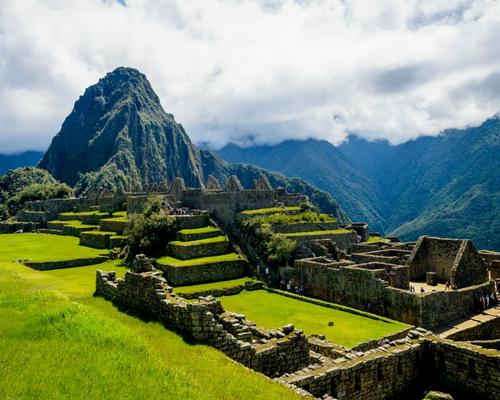 JANUARY
JANUARY
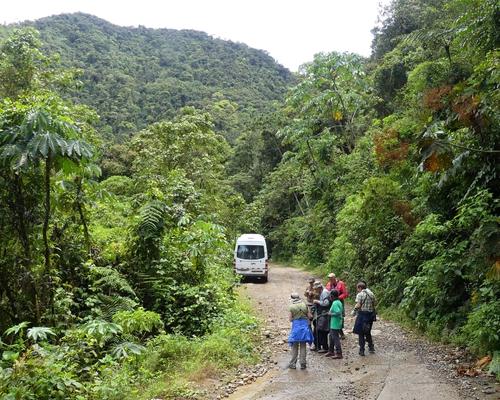 FEBUARY
FEBUARY
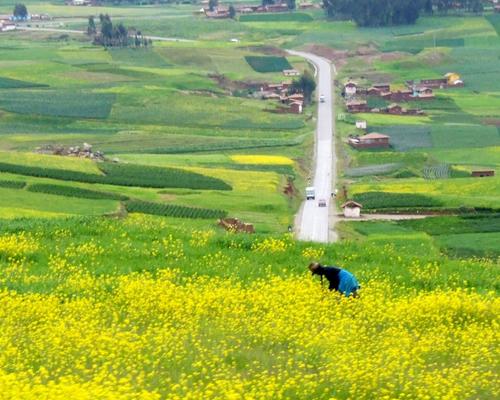 MARCH
MARCH
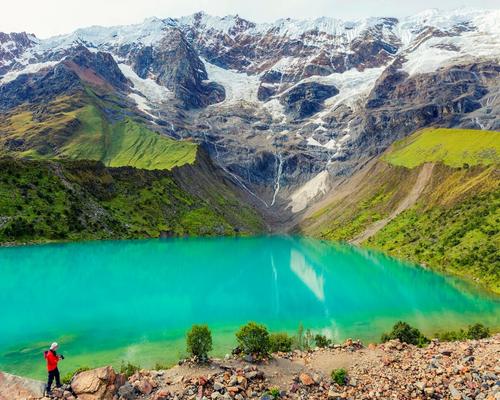 APRIL
APRIL
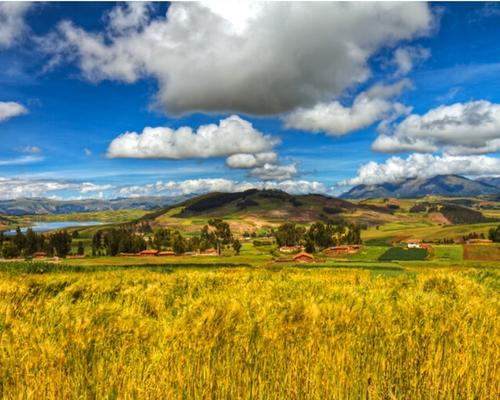 MAY
MAY
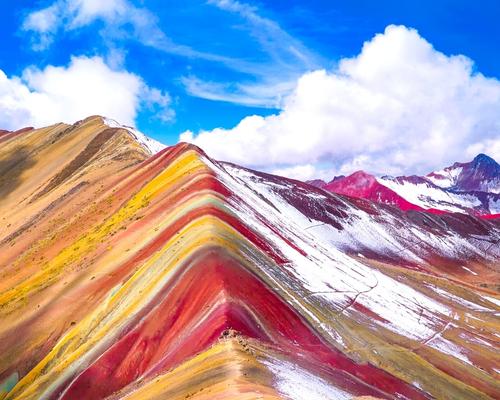 JUNE
JUNE
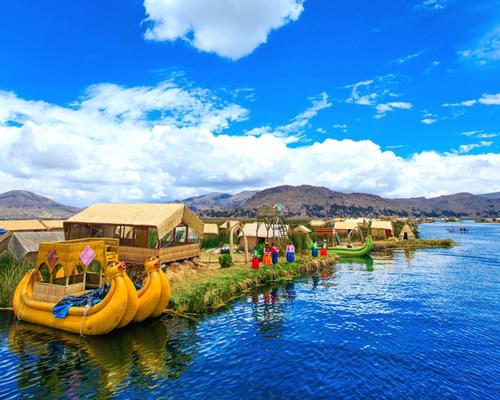 JULY
JULY
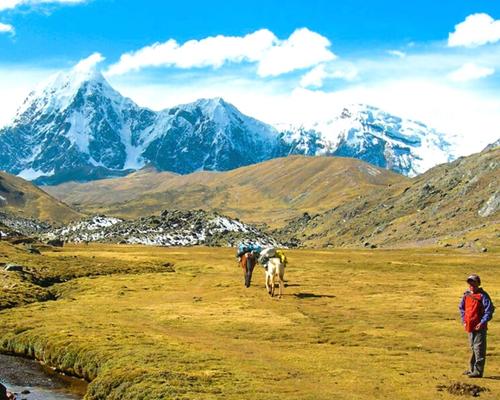 AUGUST
AUGUST
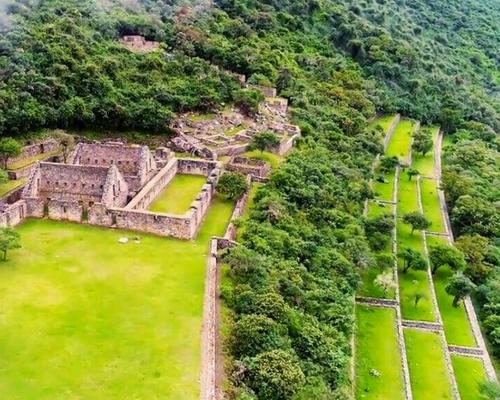 SEPTEMBER
SEPTEMBER
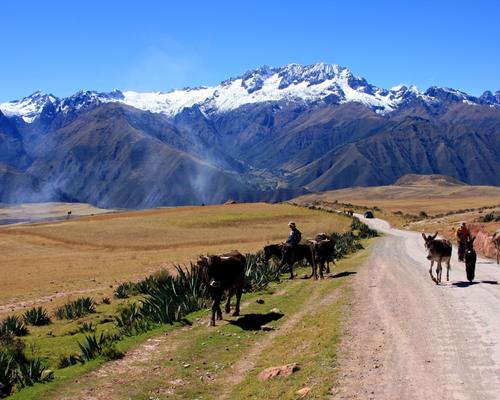 OCTOBER
OCTOBER
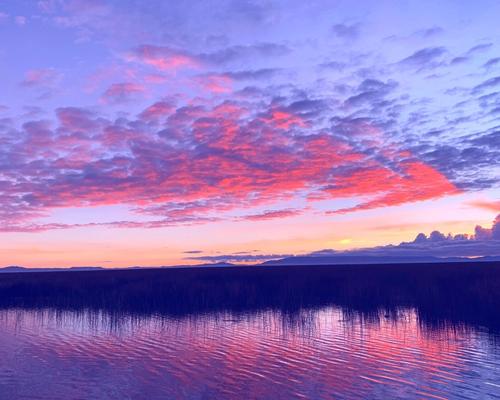 NOVEMBER
NOVEMBER
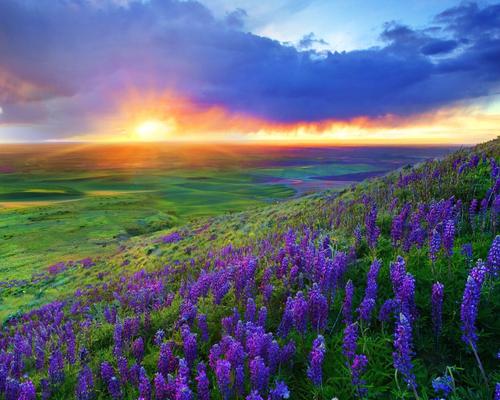 DECEMBER
DECEMBER
To book this tour, a minimum of $ 900 USD per person is required, the remaining balance will be paid upon arrival in Peru, at the Cusco office.
Any other additional information, please coordinate with your travel agent.
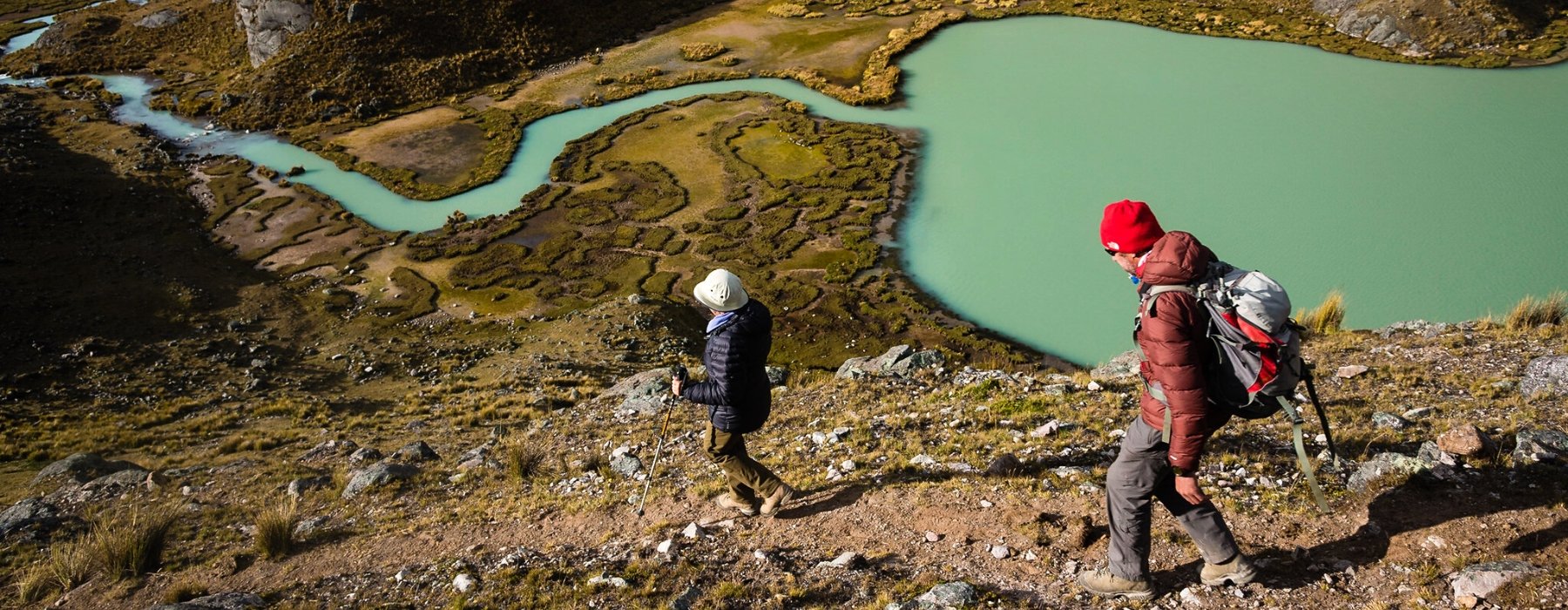
Nothing gets you closer to a country than walking through it, and we’ve got trips to suit walkers of all levels and interests.
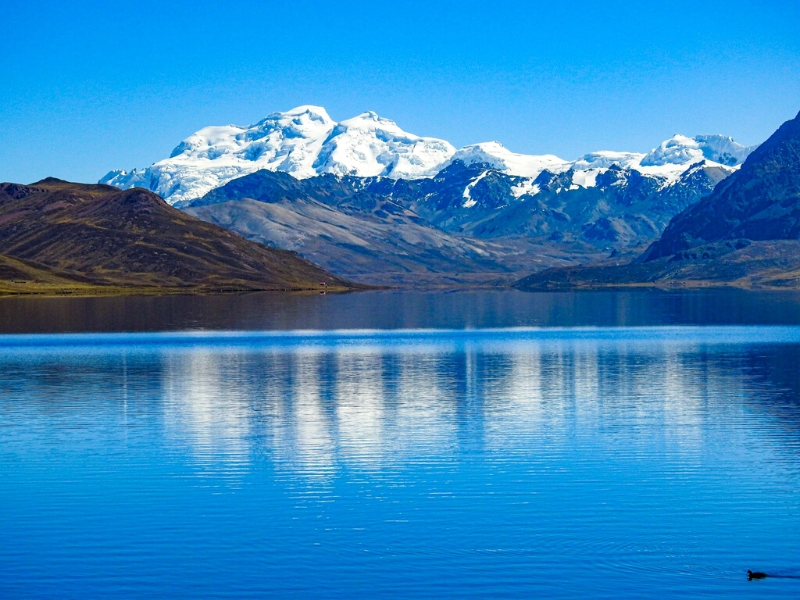
All our Walking trips are graded from ‘Easy’ through to ‘Challenging to Tough’. On our online trip itineraries you’ll find a chart showing the daily walk distances, timings and information on the route including the terrain, altitude. Generally, no specific training is needed but you might feel more comfortable if you’ve got out walking a few times in the lead-up to your trip.
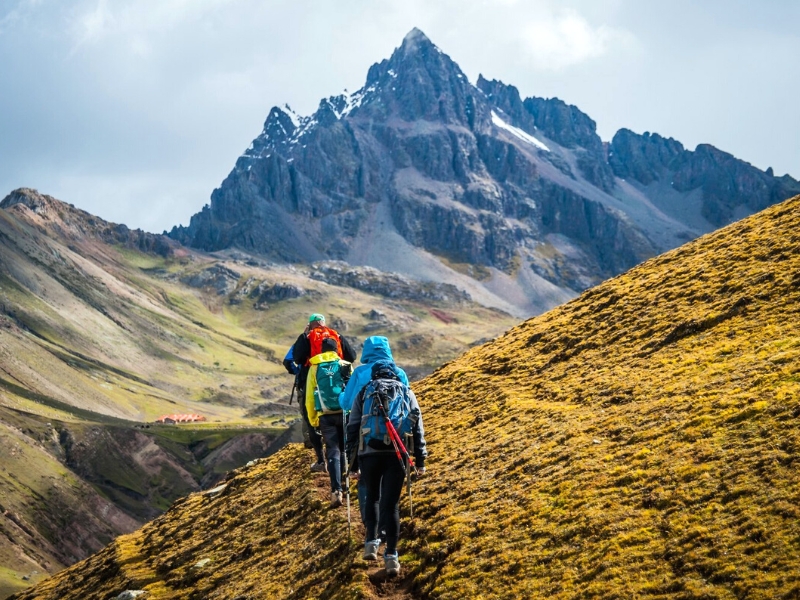
As with all our trips, every group is different but the ‘average’ group consists of roughly half couples and half solo travellers – all sharing a passion for exploring the world on foot. You’ll always have someone to keep you company along the route, but you don’t always have to walk together. Wherever possible your Andean Great Treks leader will allow everyone to walk at their own pace, regrouping regularly along the route.
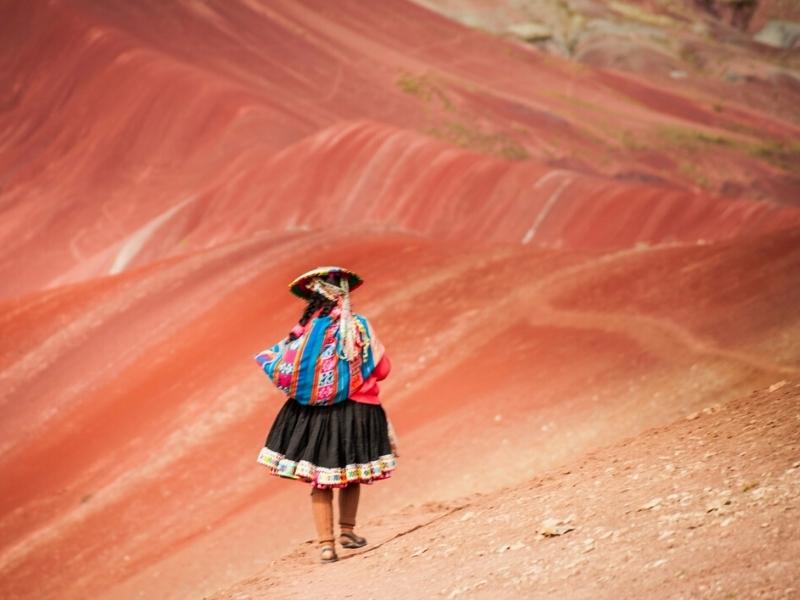
Mostly of our hikes in the mountains in Peru and Cusco like the classic Inca Trail to Machu Picchu, Ausangate Trek, Lares Trek, Ancascocha Trek, Salkantay Trek , involves an average of walking hours of 7-8 hours per day, this timing includes stops for taking photos, lunch, breaks for recovery the energy, and the most important we adapt to your walking pace. This relaxed style of trip involves to know all the attractions in greater depth.
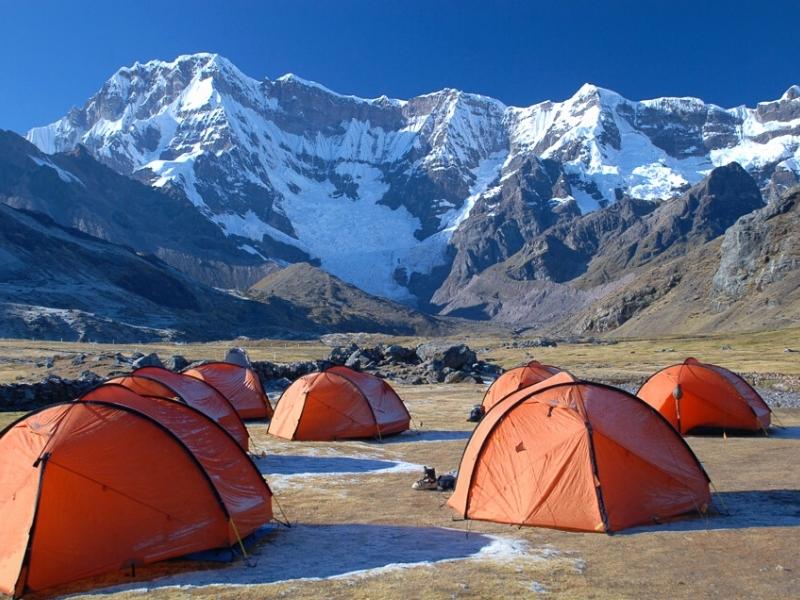
On nearly all our Walking trips, porters or mules will carry all the camping equimpent, so your main luggage will be transported for you. We recommend walk with a light rucksack, you will carry water, snacks, a camera, a small first aid kit and any extra clothing or sun protection. On more remote or challenging treks, additional guides are there to assist the leader tour guide and provide support to the group.
The acclimatization period is very important for our travelers to enjoy the experience. We suggest a minimum of 3 or 4 days of the previous stay in Cusco city, the Sacred Valley of the Incas or Machu Picchu. We recommend you check the acclimation programs we have prepared for you on our website.
The average height of our camps in the trekking circuits is 3,500 masl. In fact, one of the circuits where you sleep at the highest altitude is the Ausangate Trek, where you will have days to set up the tents at a height of 4,300 meters. Remember that Peru has snowy peaks that reach up to 6,700 masl.
From 3,000 meters above sea level, the symptoms of “altitude sickness” vary according to each person, and may even not occur. However, among the most common are a headache, dizziness, nausea, loss of appetite and insomnia. Therefore, upon arriving in the city of Cusco, located at 3,400 meters above sea level, we recommend our travelers to take a good rest, drink plenty of water, eat light meals and take slower walking. Also, it is necessary to avoid alcoholic beverages and cigarettes. The symptoms can be alleviated with high mountain medicines such as DIAMOX or similar products, but we suggest you consult with your doctor before the trip.
While on the trail, hikers will need to carry a daypack (camera equipment, water bottle, extra layers, rain gear, and other accessories you might need on the trail.) Horses and llamas will carry your duffle bag to the next camping site.
The company makes the greatest efforts to provide a safe and unforgettable experience, for this reason, the trekking guides are constantly communicated with the central office through satellite phones, ensuring the welfare of each passenger. Our guides are trained in rescue techniques and first aid in emergency outdoor, these courses are developed annually and have the standards of the wilderness first respond. At all times we have oxygen and first aid equipment. In case of any eventuality a medical director will answer our questions 24 hours a day. In addition to the animals who carry the luggage we have horses to help walkers tired or eager to ride. We recommend getting a travel insurance.
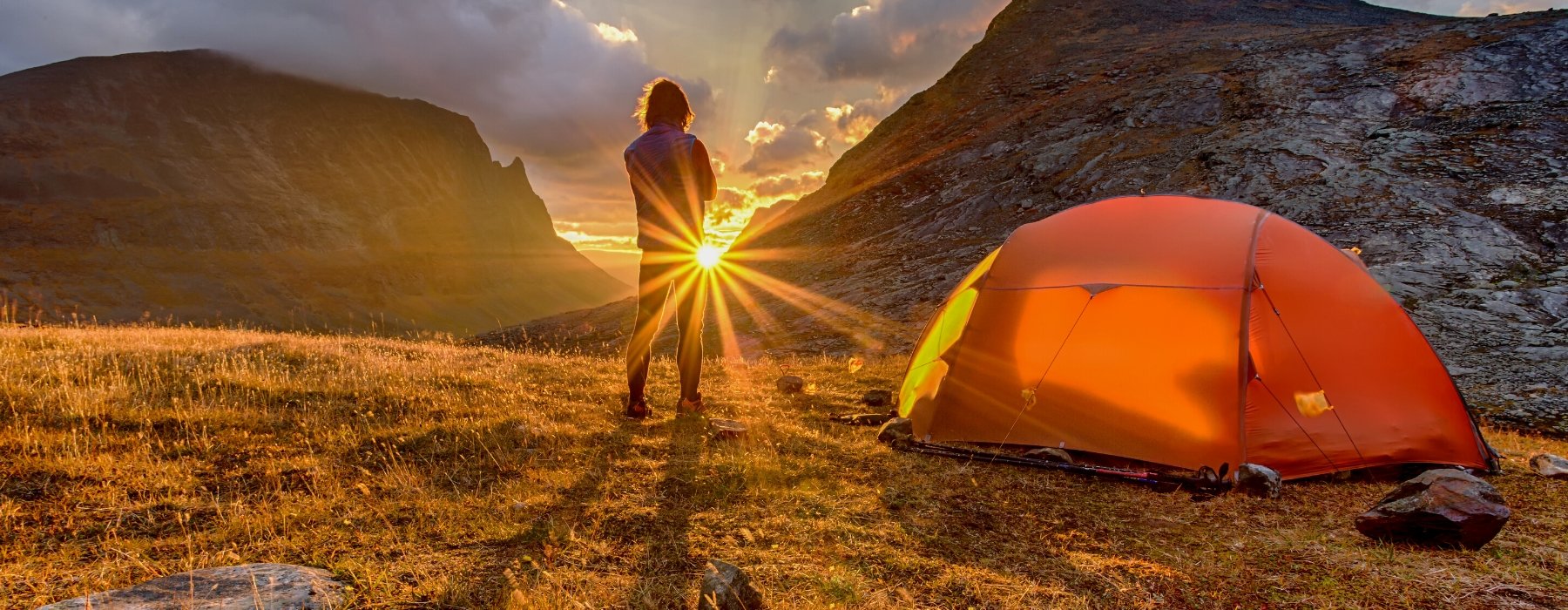
Every Andean Great Treks holiday has been thoughtfully planned and crafted by our specialists. They draw on their own extensive travel experience and the guidance and expertise of our local partners to create superb holidays. Our specialists are committed to making every aspect smooth and enjoyable; they genuinely want to ensure that the holidays they create leave you with wonderful lasting memories.
Every Andean Great Treks traveller is accompanied by an experienced tour guide, you will be immersed in Historic cities, ancient ruins and unfamiliar landscapes are all brought to life by our carefully selected local guides. They want to share their expertise and help you make your own discoveries too; their sole mission is to ensure you enjoy every moment.
Giving you the freedom to make your holiday even more memorable. We know how much our customers look forward to their holiday and we pride ourselves on the choice and flexibility that we offer to enhance every aspect of your experience. Whether it’s getting to the airport, upgrading your room or booking an additional excursion, we can help.
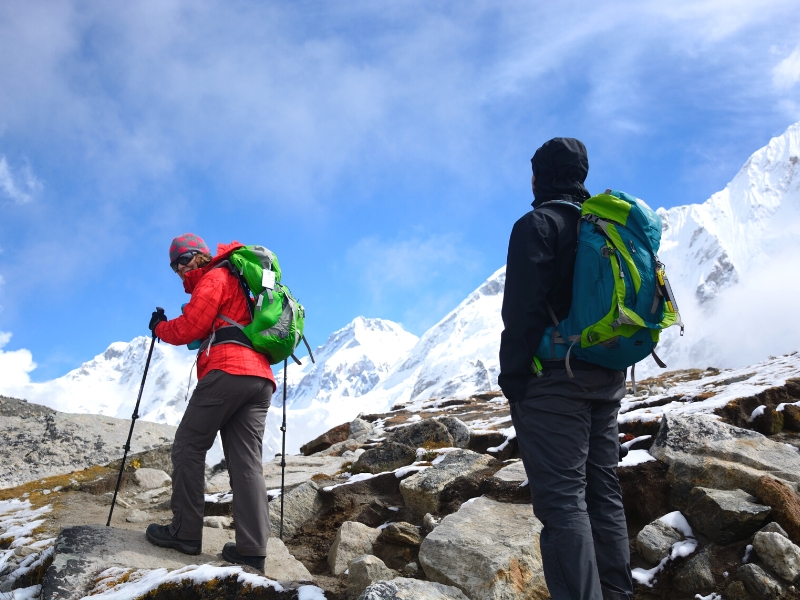
Our guides are the stars of the show; it is their unrivalled knowledge, passion and expertise that will transform your tour experience from good to truly extraordinary!
Because the have grown up in the area and know it like the back of their hand, so they can help you experience whichever aspects most interest you. They’re passionate about sharing their corner of the world with you, and as you explore together, they’ll open your eyes to the intricate details, provide background to enhance your understanding of what you’re seeing, and share stories that will bring everything to life.
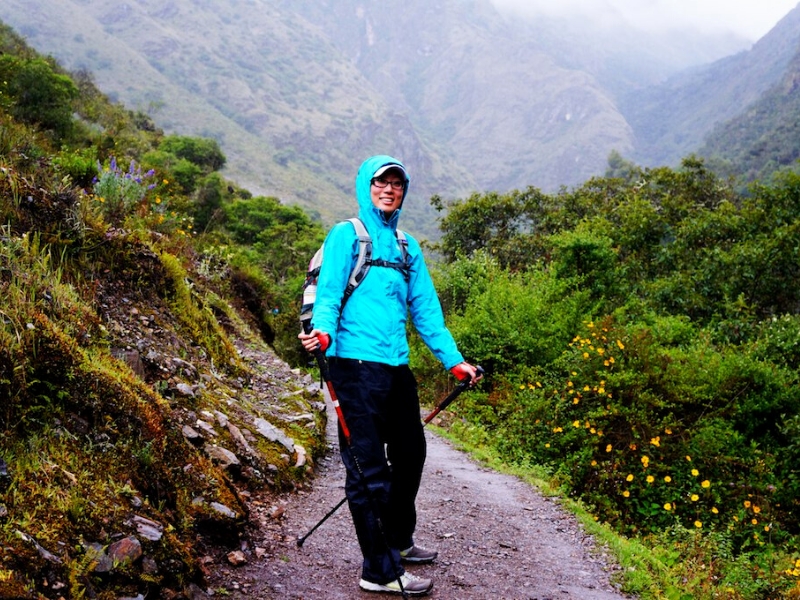
“Your inspiration for a trip can be a single word or a highly evolved outline, but it’s the conversations we have that help us understand the experience you’re looking for. Meanwhile, I’m looking back on the time I spent at the destination.
‘The great thing about working with a specialist at Andean Great Treks is how they take your complete jumble of ideas and turn them into something absolutely spectacular.’
As you begin to share your ideas with your specialist, it will connect them immediately back to a time in their own travels. Conjuring a picture of the rest time they made that same discovery, reminding them how it felt.
Your specialist understands that, when the journey is right, it has the power to excite your emotions in the most profound ways after all, that was the effect on them.
They carry a treasure box of moments, captured over many journeys, into every suggestion they’ll share with you, as they ask you how you want to feel on your trip.
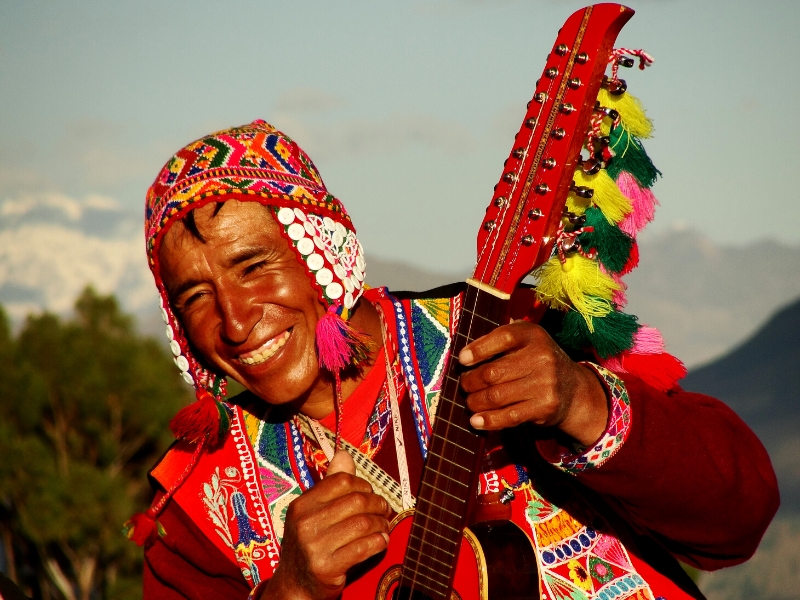
EXPERIENCES THAT CALL TO YOU
It’s what you do in a destination that helps bring it to life. It’s why we strive to choose experiences that help you connect to a place, absorbing a little of its complex character. Wherever your passions lie, we’ll recommend experiences that speak to you, and we’ll recommend the guide or local expert who’s most qualified to help you explore. Packing your holiday full of special experiences means some early starts and long days, but you can be sure that you’ll return home with many incredible memories! Read our Tours and check the Physical Ratings to see if the pace and activity levels are right for you.
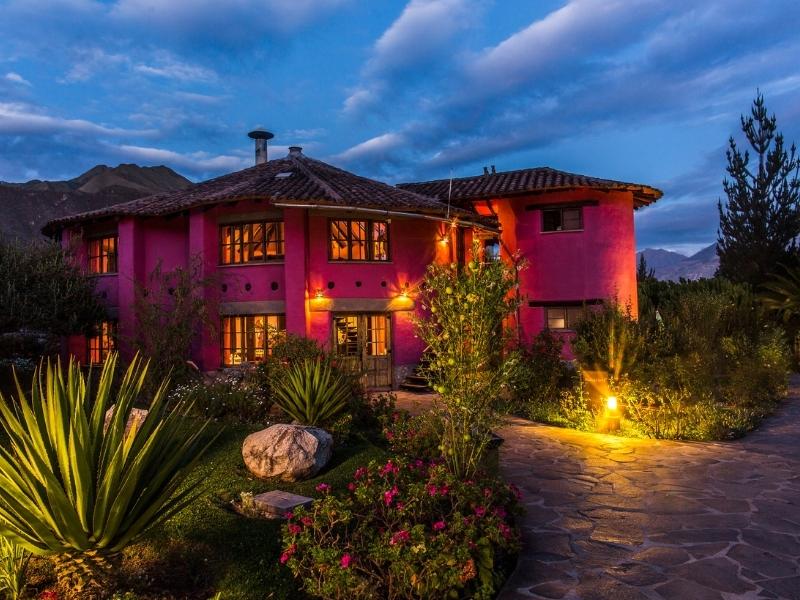
STAYS WITH DIFFERENCE
We know that where you stay is a cherished part of your travels. So, we go to great lengths to find places to stay that exceed expectations, or go above and beyond the ordinary, whether in their character, hospitality, or location. Over the years, we’ve discovered the very best properties, trying and testing them, so we can choose the right one for you. We’ve nourished long-standing relationships with these establishments and the people who founded them, and we’ve stayed there many times often, we’ll even know which rooms have the best views (and reserve them for you).
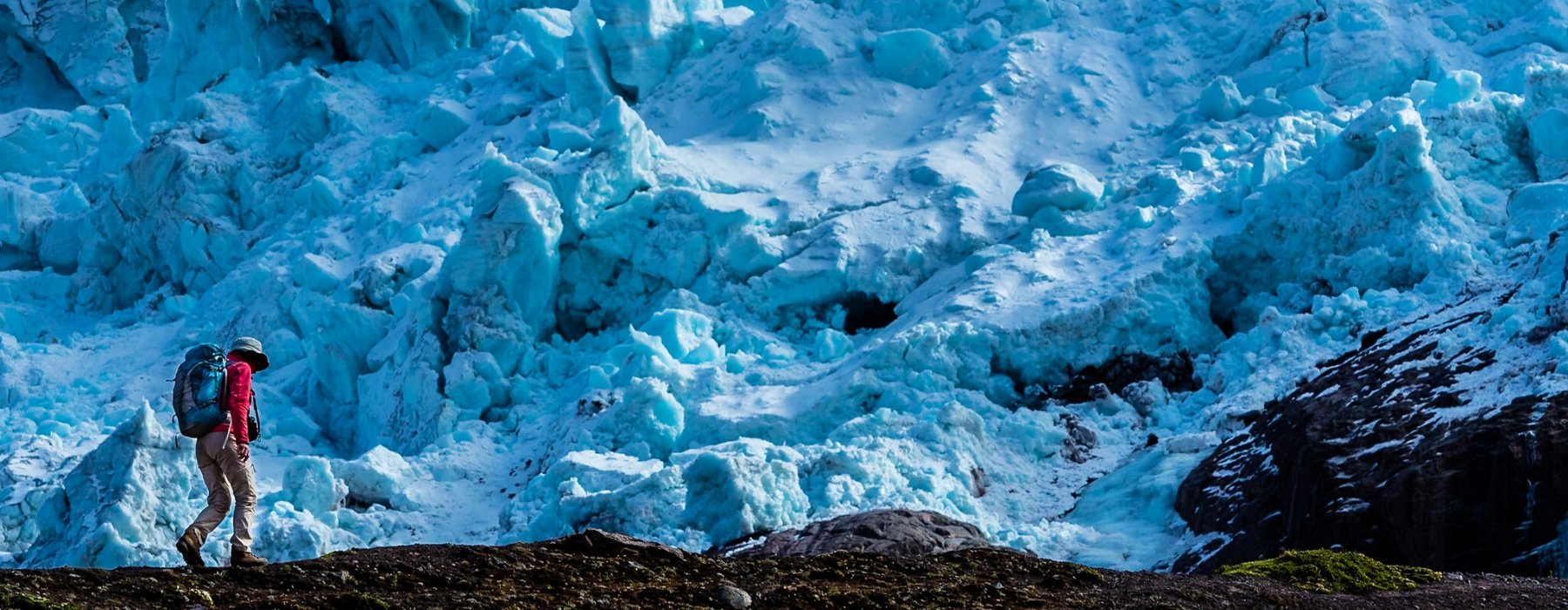
Our style of travel — authentic, thoughtful, and focused on building meaningful connections to the people and places you visit — is inherently respectful and considerate of the destinations we love. We design each aspect of your trip exactly as you want it, which includes its sustainability. That might mean choosing a train journey instead of a flight, staying at eco-friendly wildlife lodges, or opting for experiences that give back to the communities you’re visiting. The choice is yours.
Responsible travel has always been at the heart of what we do. First and foremost, because it gives you the best experience, but, also because it helps to preserve the communities and landscapes you visit. This isn’t new for us we collaborated with local communities and outside experts so we can grow to be better ambassadors.
The most authentic and interesting experiences often directly benefit the local people. We prefer to buy local products that are produced in the organic farms of the Sacred Valley, we also have alliances with local artisan organizations who provide us with souvenir items for our clients, your money directly benefits the local economy.
Our style of travel — authentic, thoughtful, and focused on building meaningful connections to the people and places you visit — is inherently respectful and considerate of the destinations we love. We design each aspect of your trip exactly as you want it, which includes its sustainability. That might mean choosing a train journey instead of a flight, staying at eco-friendly wildlife lodges, or opting for experiences that give back to the communities you’re visiting. The choice is yours.
Responsible travel has always been at the heart of what we do. First and foremost, because it gives you the best experience, but, also because it helps to preserve the communities and landscapes you visit. This isn’t new for us we collaborated with local communities and outside experts so we can grow to be better ambassadors.
The most authentic and interesting experiences often directly benefit the local people. We prefer to buy local products that are produced in the organic farms of the Sacred Valley, we also have alliances with local artisan organizations who provide us with souvenir items for our clients, your money directly benefits the local economy.
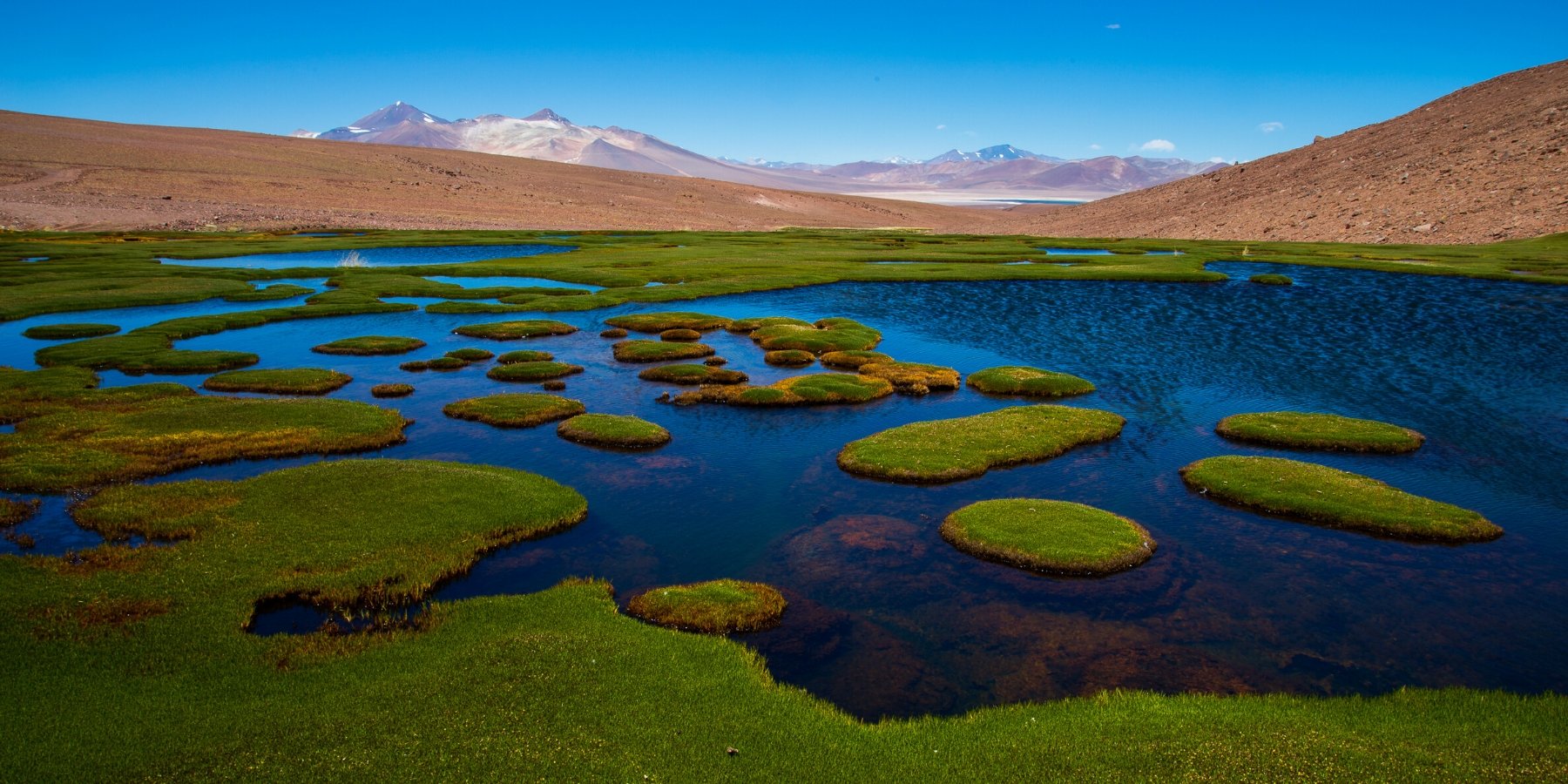
‘There’s a saying: we don’t inherit the Earth from our ancestors, we borrow it from our children. When we show you our country, this philosophy guides everything we do. It’s our responsibility to preserve the environment and wildlife, and support communities. That means using slower modes of transport, like cycling, employing local people, and working with communities who’ll benefit directly from your visit. This also gives you the best, most authentic impression of the places we want to share with you.
We prefer to buy local products in ecological bags, to avoid the use of plastic bags, likewise we teach the use of soaps and ecological products in each tour that we organize. We also work on reforestation projects with local communities who take care of landscape resources such as communal reserves, national parks.
‘There’s a saying: we don’t inherit the Earth from our ancestors, we borrow it from our children. When we show you our country, this philosophy guides everything we do. It’s our responsibility to preserve the environment and wildlife, and support communities. That means using slower modes of transport, like cycling, employing local people, and working with communities who’ll benefit directly from your visit. This also gives you the best, most authentic impression of the places we want to share with you.
We prefer to buy local products in ecological bags, to avoid the use of plastic bags, likewise we teach the use of soaps and ecological products in each tour that we organize. We also work on reforestation projects with local communities who take care of landscape resources such as communal reserves, national parks.
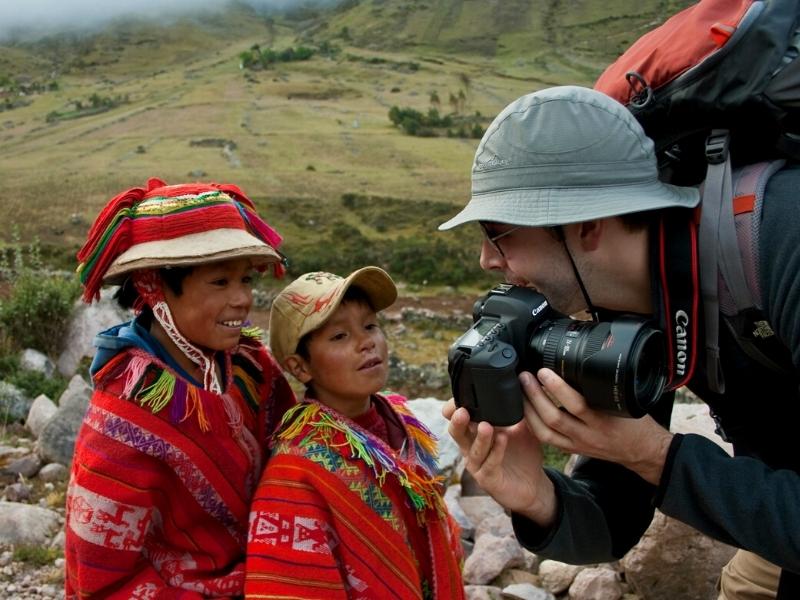
The Lares Trek combines high Andean trekking with a chance for genuine interaction with the most isolated indigenous communities which keep the inca culture alive. Majestic glaciers, amazing glacial lakes, waterfalls, llamas, and alpacas.
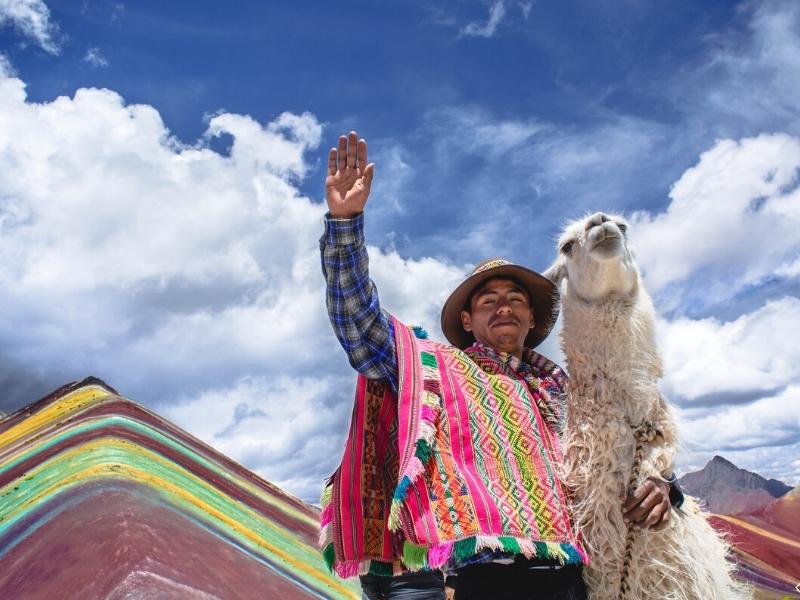
The Ausangate Trek is renowned for its otherworldly natural scenery. It’s considered by many to be one of the world’s best high-altitude treks, the trek takes hikers over several high passes, into low alpine valleys, and through traditional Peruvian villages.

Explore the Vilcabamba trek to Machu Picchu in 8 days. This hike follows the original Inca trails that begin at the archaeological center of Choquequirao, visiting grand Inca ruins, mountains, canyons, and cloud forests filled with wildflowers.
